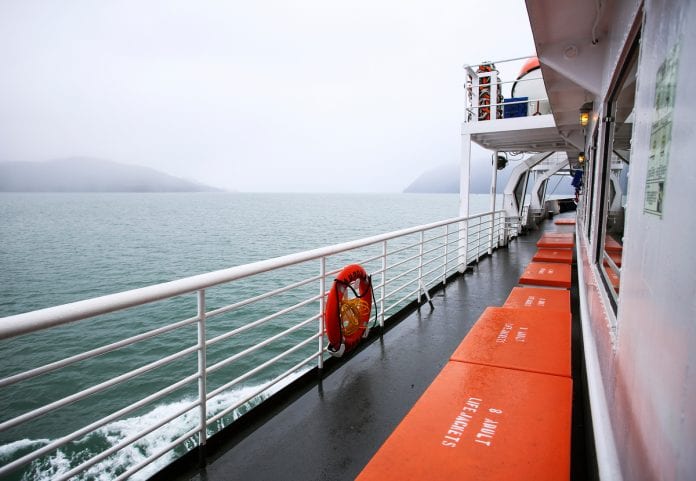
A new report prepared for the region’s economic entity on the importance of the Alaska Marine Highway System to Prince William Sound stakeholders suggests possible approaches to organizing and funding a regional ferry service.
The document received by the Prince William Sound Economic Development District was prepared by the National Association of Development Organizations Research Foundation, as part of a research project funded by the U.S. Department of Agriculture.
While the report offers no solutions, it does offer options, said Wanetta Ayers executive director of the PWSEDD.
“It identifies how other communities, particularly rural communities, have organized and funded transportation projects,” she said. “It illustrates these organizational forms and discusses implications for the Prince William Sound region.”
The PWEDD, established in 1991, serves Chenega, Cordova, Tatitlek, Valdez and Whittier as a regional development entity, which serves as a forum for advancing regional economic issues, sustainable development and stewardship of the Prince William Sound area.
“If the operating budget passed by the Legislature holds, the Alaska Marine Highway is looking at budget reduction of nearly $40 million in fiscal year 2020,” Ayers said. “Undoubtedly, there will be reductions in service and other implications that will impact the Prince William Sound communities, residents and businesses.”
“Chenega, Cordova and Tatitlek are reliant on ferry service,” she said. “It is the only form of infrastructure that ties together all five Prince William Sound communities. The ports of Valdez, the southern terminus of the Trans Alaska Oil Pipeline, and Whittier are critical intermodal access points to and for the rest of Alaska. These and other factors necessitate a strategic evaluation of Prince William Sound transportation systems.”
The 21-page report compiled by the NADO Research Foundation concludes that while there are no simple steps for moving forward with improving ferry service, the Alaska Marine Highway System reform and options for regionalizing service may both provide opportunities to ensure that ferry service meets needs in an affordable and reliable way.
“Robust engagement processes can gather valuable information from stakeholders as well as provide an opportunity to educate about transportation processes and funding,” the report said. “This might lead to a productive public discussion about trade-offs of different funding, operational, and ownership or institutional governance scenarios. Stakeholder mapping can be a useful way to identify who has an interest in ferry service I the region, what their interest is, and what they may be able to invest in the service in terms of expertise, ridership, financial support, or other resources.”
The report notes that these five communities share a community and economic development need to be connected to the rest of the state and beyond to access markets and essential services, and to allow for movement of people and goods. Each of these communities also has different transportation assets, including roads, rail, ferry service and other water transportation, commercial air service and general aviation, and pipelines, the report notes.
The research team looked at several federal funding programs that might assist with some costs of developing and providing ferry service to the region. These include programs from a variety of transportation agencies, each with different eligibility and project types.
Flexible funding sources for transportation across modes and communities include Federal Highway Administration (FHWA) Surface Transportation Block Grants, the report said. Although the total available funding is small, FHWA Federal Lands Access Program funds could support a ferry-related project because communities in the Prince William Sound region are all gateway communities to the Chugach National Forest. This funding source has periodic, rather than annual, calls of projects, and the match rate is 9.3 percent for most projects, lower than many other federal programs, the report said.
Ferry service is also eligible for Federal Transit Administration Section 5311 funds, for rural public transportation, researchers said. FTA 5311 funds can be used for rural transit operating expenses with a 50 percent match required, and for capital expenses with a 20 percent match rate.
The report may be downloaded at https://tinyurl.com/y499wy7b.





